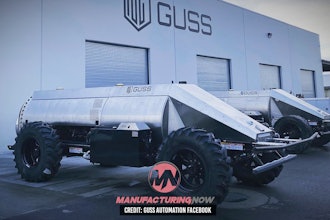Trash is everywhere. It’s on land, where it sometimes piles so high it becomes a smoldering mountain. It’s in space, where it breaks down differently while moving at blistering speeds and being pummeled by solar radiation. And it’s in our water, where it sometimes forms huge garbage waves.
The Ocean Cleanup, a nonprofit environmental engineering organization, has identified one river where the trash waves seem to be continually breaking. The group said the Rio Motagua basin in Guatemala is particularly messy, sending an estimated 20,000 tons of plastic into the Caribbean Sea on an annual basis. That means this one river is responsible for 2% of the plastic that entered the oceans worldwide.
To push back against the rush of rubbish, Ocean Cleanup has developed the eight-meter-tall Interceptor Trashfence. It looks like a big, metal volleyball net and it’s designed to contain trash upstream before it can hit the ocean and disperse. It’s an upgraded version of the Interceptor Original, whose 10,000 kilogram capacity wouldn’t hold up long against the annual Motagua floods.
The Interceptor Trashfence uses technology common in avalanche and landslide protection systems. With the reinforced model in place on the river bed, the idea is to catch the trash and then wait for water levels to recede before moving the garbage pile with excavators.
In a video showing the Interceptor Trashfence in action earlier this year, a shocking amount of garbage rages down the Rio Motagua before it’s trapped by the fence. Unfortunately, the Trashfence eventually springs a leak because the force of the river erodes the river base below the fence. Fortunately, Ocean Cleanup engineers don’t seem discouraged.
For now, the organization is at work optimizing the design and figuring out just how many Trashfences it will take to keep all or most of the plastic from making it to the sea.






















